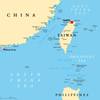Great Lakes Restoration Plan Announced
U.S. Environmental Protection Agency (EPA) informs that Administrator Gina McCarthy has released a new Great Lakes Restoration Initiative (GLRI) Action Plan that lays out steps that federal agencies will take during the next five years to protect water quality, control invasive species and restore habitat in the largest surface fresh water system in the world. McCarthy, who chairs the federal Great Lakes Interagency Task Force, released the plan at a meeting of Great Lakes Mayors in Chicago.
“The new Great Lakes Restoration Initiative Action Plan lays out the steps we need to take to get us closer to the day when all Great Lakes fish will be safe to eat, all beaches will be safe for swimmers and harmful algal blooms will not threaten our drinking water supplies,” said McCarthy. “During the next five years, federal agencies will continue to use Great Lakes Restoration Initiative resources to strategically target the biggest threats to the Great Lakes ecosystem and to accelerate progress toward long term goals.”
"We're currently engaged in the largest conservation initiative in American history, with more farmers taking action to preserve clean land and water than ever before. As part of that historic effort, many farmers in the Great Lakes region are working hard to help improve water quality downstream," said U.S. Agriculture Secretary Tom Vilsack. "We're proud to partner with farmers and the many others engaged in voluntary efforts to restore the health of the Great Lakes. Supporting sound conservation practices such as planting cover crops, rotating crops, installing filter strips and restoring wetlands not only helps keep our water clean, it can help create jobs and grow the economy in local communities."
"The Army Corps is proud to be an integral part of this collaboration, ensuring positive actions produce positive benefits. The Great Lakes Restoration Initiative continues to highlight the diversity of the Corps of Engineers' capabilities for the planning, design and construction of environmental restoration projects,” said Assistant Secretary of the Army for Civil Works, Jo-Ellen Darcy.
"The Department of the Interior is a proud partner in the Great Lakes Restoration Initiative," said Assistant Secretary of the Interior for Water and Science Anne Castle. "Our Great Lakes plans and projects involve pollution prevention and cleanup of the most adversely affected areas, increasing understanding and management of invasive species, and a first-ever comprehensive assessment of the entire 530,000 acres of Great Lakes coastal wetlands habitat for the purpose of strategically targeting wildlife restoration and protection efforts. The Great Lakes are a key economic driver and Interior is committed to help restore healthy watersheds in the region."
The Great Lakes Restoration Initiative was launched in 2010 to accelerate efforts to protect and restore the largest surface fresh water system in the world – to provide additional resources to make progress toward the most critical long-term goals for this important ecosystem.
The GLRI Action Plan announced now, summarizes the actions federal agencies plan to implement during Fiscal Years 2015 through 2019 using GLRI funding. They will build on restoration and protection work carried out under the first Action Plan, with a major focus on:
• Cleaning up Great Lakes Areas of Concern;
• Preventing and controlling invasive species;
• Reducing nutrient runoff that contributes to harmful and nuisance algal blooms; and
• Restoring habitat to protect native species.
Great Lakes Restoration Initiative resources have helped fund cleanup actions required to delist five Great Lakes Areas of Concern and to formally delist the Presque Isle Bay Area of Concern – a major change from the 25 years before the Initiative, during which only one Area of Concern was cleaned up and delisted. Great Lakes Restoration Initiative resources have also been used to double the acreage enrolled in agricultural conservation programs in watersheds where phosphorous runoff contributes to harmful algal blooms in western Lake Erie, Saginaw Bay and Green Bay. So far, GLRI resources have been used to fund over 2,000 projects to improve water quality, to protect and restore native habitat and species, to prevent and control invasive species and to address other Great Lakes environmental problems.
The Great Lakes Interagency Task Force is chaired by the EPA Administrator and includes the White House Council on Environmental Quality, the Departments of Agriculture, Commerce, Defense, Health and Human Services, Homeland Security, Housing and Urban Development, Interior, State and Transportation.
To learn more about the GLRI Action Plan: www.glri.us/actionplan/












